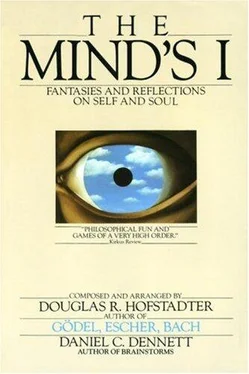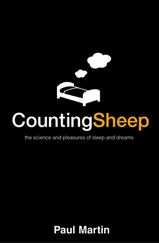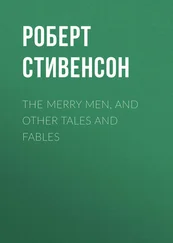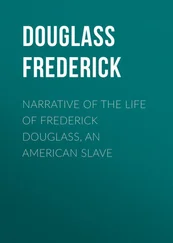ANTEATER: Your interpretation may very well be more accurate than mine, Mr. Crab. Thank you for bringing out that subtle point.
ACHILLES: What does a symbol do that a signal couldn’t do?
ANTEATER: It is something like the difference between words and letters. Words, which are meaning-carrying entities, are composed of letters, which in themselves carry no meaning. This gives a good idea of the difference between symbols and signals. In fact it is a useful analogy, as long as you keep in mind the fact that words and letters are passive, symbols and signals are active.
ACHILLES: I’ll do so, but I’m not sure I understand why it is so vital to stress the difference between active and passive entities.
ANTEATER: The reason is that the meaning which you attribute to any passive symbol, such as a word on a page, actually derives from the meaning which is carried by corresponding active symbols in your brain. So that the meaning of passive symbols can only be properly understood when it is related to the meaning of active symbols.
ACHILLES: All right. But what is it that endows a symbol —an active one, to be sure—with meaning, when you say that a signal, which is a perfectly good entity in its own right, has none?
ANTEATER: It all has to do with the way that symbols can cause other symbols to be triggered. When one symbol becomes active, it does not do so in isolation. It is floating about, indeed, in a medium, which is characterized by its caste distribution.
CRAB: Of course, in a brain there is no such thing as a caste distribution, but the counterpart is the “brain state.” There, you describe the states of all the neurons, and all the interconnections, and the threshold for firing of each neuron.
ANTEATER: Very well; let’s lump “caste distribution” and “brain state” under a common heading, and call them just the “state.” Now the state can be described on a low level or on a high level. A low-level description of the state of an ant colony would involve painfully specifying the location of each ant, its age and caste, and other similar items. A very detailed description, yielding practically no global insight as to why it is in that state. On the other hand, a description on a high level would involve specifying which symbols could be triggered by which combinations of other symbols, under what conditions, and so forth.
ACHILLES: What about a description on the level of signals, or teams.
ANTEATER: A description on that level would fall somewhere in between the low-level and symbol-level descriptions. It would contain a great deal of information about what is actually going on in specific locations throughout the colony, although certainly less than an ant-by-ant description, since teams consist of clumps of ants. A team-by-team description is like a summary of an ant-by-ant description. However, you have to add extra things which were not present in the ant-by-ant description—such as the relationships between teams, and the supply of various castes here and there. This extra complication is the price you pay for the right to summarize.
ACHILLES: It is interesting to me to compare the merits of the descriptions at various levels. The highest-level description seems to carry the most explanatory power, in that it gives you the most intuitive picture of the ant colony, although strangely enough, it leaves out seemingly the most important feature—the ants.
ANTEATER: But you see, despite appearances, the ants are not the most important feature. Admittedly, were it not for them, the colony wouldn’t exist; but something equivalent—a brain—can exist, ant-free. So, at least from a high-level point of view, the ants are dispensable.
ACHILLES: I’m sure no ant would embrace your theory with eagerness.
ANTEATER: Well, I never met an ant with a high-level point of view.
CRAB: What a counterintuitive picture you paint, Dr. Anteater. It seems that, if what you say is true, in order to grasp the whole structure, you have to describe it omitting any mention of its fundamental building blocks.
ANTEATER: Perhaps I can make it a little clearer by an analogy. Imagine you have before you a Charles Dickens novel.
ACHILLES: The Pickwick Papers —will that do?
ANTEATER: Excellently! And now imagine trying the following game: You must find a way of mapping letters onto ideas, so that the entire Pickwick Papers makes sense when you read it letter by letter.
ACHILLES: Hmm.... You mean that every time I hit a word such as “the,” I have to think of three definite concepts, one after another, with no room for variation?
ANTEATER: Exactly. They are the “t”-concept, the “h”-concept, and the “e”-concept—and every time, those concepts are as they were the preceding time.
ACHILLES: Well, it sounds like that would turn the experience of “reading” The Pickwick Papers into an indescribably boring nightmare. It would be an exercise in meaninglessness, no matter what concept I associated with each letter.
ANTEATER: Exactly. There is no natural mapping from the individual letters into the real world. The natural mapping occurs on a higher level-between words, and parts of the real world. If you wanted to describe the book, therefore, you would make no mention of the letter level.
ACHILLES: Of course not! I’d describe the plot and the characters, and so forth.
ANTEATER: So there you are. You would omit all mention of the building blocks, even though the book exists thanks to them. They are the medium, but not the message.
ACHILLES: All right—but what about ant colonies?
ANTEATER: Here, there are active signals instead of passive letters, and active symbols instead of passive words—but the idea carries over.
ACHILLES: Do you mean I couldn’t establish a mapping between signals and things in the real world?
ANTEATER: You would find that you could not do it in such a way that the triggering of new signals would make any sense. Nor could you, succeed on any lower level—for example, the ant level. Only on the symbol level do the triggering patterns make sense. Imagine, for instance, that one day you were watching Aunt Hillary when I arrived to pay a call. You could watch as carefully as you wanted, and yet you would probably perceive nothing more than a rearrangement of ants.
ACHILLES: I’m sure that’s accurate.
ANTEATER: And yet, as I watched, reading the higher level instead of the lower level, I would see several dormant symbols being awakened those which translate into the thought “Oh, here’s that charming D Anteater again—how pleasant!”—or words to that effect.
ACHILLES: That sounds like what happened when the four of us all found different levels to read in the MU-picture-or at least three of us did....
TORTOISE: What an astonishing coincidence that there should be such a resemblance between that strange picture which I chanced upon in the Well-Tempered Clavier and the trend of our conversation.
ACHILLES: Do you think it’s just coincidence?
TORTOISE: Of course.
ANTEATER: Well, I hope you can grasp now how the thoughts in Aunt Hillary emerge from the manipulation of symbols composed of signals composed of teams composed of lower-level teams, all the way down to ants.
ACHILLES: Why do you call it “symbol manipulation”? Who does the manipulating, if the symbols are themselves active? Who is the agent?
ANTEATER: This gets back to the question that you earlier raised about purpose. You’re right that symbols themselves are active, but the activities which they follow are nevertheless not absolutely free. The activities of all symbols are strictly determined by the state of the full system in which they reside. Therefore, the full system is responsible for how its symbols trigger each other, and so it is quite reasonable to speak of the full system as the “agent.” As the symbols operate, the state of the system gets slowly transformed, or updated. But there are many features that remain over time. It is this partially constant, partially varying system that is the agent. One can give a name to the full system. For example, Aunt Hillary is the “who” who can be said to manipulate her symbols; and you are similar, Achilles.
Читать дальше











